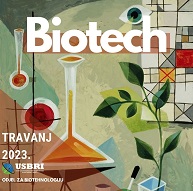Biotechnology news
Effects of Herpes Simplex Virus Vector–Mediated Enkephalin Gene Therapy on Bladder Overactivity and Nociception
The effects of herpes simplex virus (HSV) vector–mediated enkephalin on bladder overactivity and pain have been previously reported. In this study, autors evaluated the effects of vHPPE (E1G6-ENK), a newly engineered replication-deficient HSV vector encoding human preproenkephalin (hPPE). vHPPE or control vector was injected into the bladder wall of female rats 2 weeks prior to the following studies. A reverse-transcription PCR study showed high hPPE transgene levels in L6 dorsal root ganglia innervating the bladder in the vHPPE group. The number of freezing behaviors, which is a nociceptive reaction associated with bladder pain, was also significantly lower in the vHPPE group compared with the control group. The number of L6 spinal cord c-fos–positive cells and the urinary interleukin (IL)-1β and IL-6 levels after resiniferatoxin (RTx) administration into the bladder of the vHPPE group were significantly lower compared with those of the control vector–injected group. In continuous cystometry, the vHPPE group showed a smaller reduction in intercontraction interval after RTx administration into the bladder. This antinociceptive effect was antagonized by naloxone hydrochloride. Thus, the HSV vector vHPPE encoding hPPE demonstrated physiological improvement in visceral pain induced by bladder irritation. Gene therapy may represent a potentially useful treatment modality for bladder hypersensitive disorders such as bladder pain syndrome/interstitial cystitis.
Nanoparticles Deliver Gene Therapy Directly to Skin Cells
Scientists have developed an siRNA-carrying gold nanoparticle that they claim can be mixed with a commercial moisturizing cream to enable the topical delivery of gene-targeting therapeutics directly into deep skin layers. The Northwestern University team says the platform could lead to the development of topical forms of gene therapy for diseases such as skin cancer, inflammation, and genetic skin disorders.
Researchers Improve Gene Therapy Technique for Children with Immune Disorder
Researchers enhance gene therapy approach for children with adenosine deaminase (ADA)-deficient severe combined immunodeficiency (SCID) using chemotherapy as conditioning regimen. For the first time, investigators test two different viral vectors to transport normal genes into the young patients' bone marrow stem cells and two different treatment plans in preparation for receiving gene therapy and compare outcomes.
Shape matters in DNA nanoparticle therapy
Researchers from The Johns Hopkins University and Northwestern University have discovered how to control the shape of nanoparticles that move DNA through the body and have shown that the shapes of these carriers may make a big difference in how well they work in treating cancer and other diseases. The results of this study, which were published in the journal Advanced Materials ("Plasmid-TemplatedShape Control of Condensed DNA–Block Copolymer Nanoparticles"), are also noteworthy because this gene therapy technique does not use a virus to carry DNA into cells. “These nanoparticles could become a safer and more effective delivery vehicle for gene therapy targeting cancer and other illnesses than can be treated with gene medicine,” said Hai-Quan Mao, of Johns Hopkins, who, together with Erik Luijten of Northwestern, led this research.
T-Cell Therapy for ALL Shows Benefit
Researchers reported encouraging but preliminary results of gene-based immune therapy in two children with relapsed and refractory acute lymphoblastic leukemia (ALL). Both children achieved a remission after they were given T cells modified to attack B cells bearing the surface protein CD19, according to Stephan A. Grupp, MD, PhD, of the Children's Hospital of Philadelphia, and colleagues.
Contact
Radmile Matejčić 2
51000 Rijeka
Croatia
Tel. +385 51 584 550
ured@biotech.uniri.hr
OIB (VAT): 64218323816
IBAN: HR3724020061400006958
Radmile Matejčić 2, O-047
http://studentska.uniri.hr/
Biotechnology for the Life Sciences e-mail :














